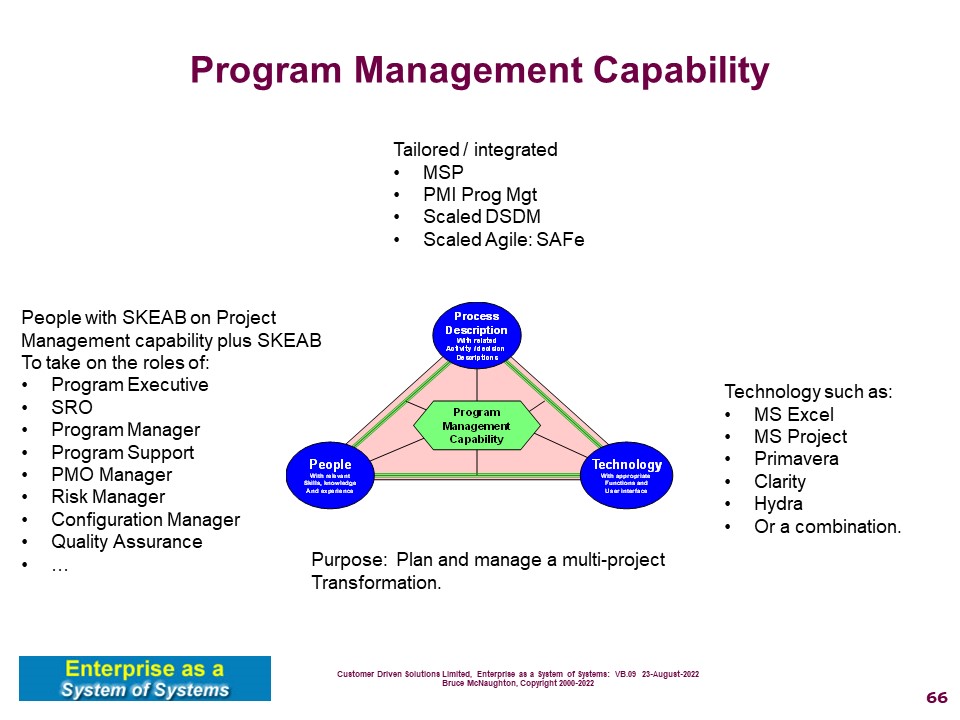Programme Management
Process Design Pattern
Purpose
To provide a management structure for a large complex change / transformation within the organization.
These types of changes tend to have a longer time horizon then a single project.
Translate architecture into delivery / operations. (matrix)
This type of process may also be used with one or more life cycle processes, such as, Capability Innovation Life Cycle or
This process supports the implementation of the programme management capability

Outcomes
Activities
(from MSP - Managing Successful Programmes)
MSP 2019
-
Identify the programme
-
Design the outcomes
-
Plan progressive delivery
-
Deliver the capabilities
-
Embed the outcomes
-
Evaluate new information.
-
Close the Program
MSP 2011 or Earlier
- Identifying a Programme
- Defining a Programme
- Managing the Tranches
- Delivering the Capability
- Realizing the Benefits
- Closing a Programme
Both versions are supported by the following activities
- Common Management Activities
- Interface to Project Management Process
Roles
(from MSP - Managing Successful Programmes)
- Programme Manager
- Programme Sponsor
- Project Manager
- (Optional) Programme Office Manager
Entry Criteria
Program Change and outcomes identified ... (may be fuzzy)
Objects
Programme,
Programme Plan,
Programme Team
Portfolio of Projects
Blueprint (MSP 2011 or earlier)
Target Operating Model (TOM)
Various other supporting documents.
Process Owner
Person who is Managing Programme Managers with support from HR, Finance, Quality. (Or Staff Manager or PMO).
References
This process links to the following Best Practice, External Standards and Product Standards. Links to other processes that this process may start are also indicated.
External Standards
ISO 9001:2015 Quality Management Systems: Requirements
MSP (Managing Successful Programmes)
Book References
Can Two Rights Make a Wrong?, Sara J. Moulton Reger
Managing Successful Programmes, UK Government.
Portfolio, Programme, and Project Management Offices (P3O), UK Government.
Managing at the Speed of Change, Daryl R. Conner
Initiates